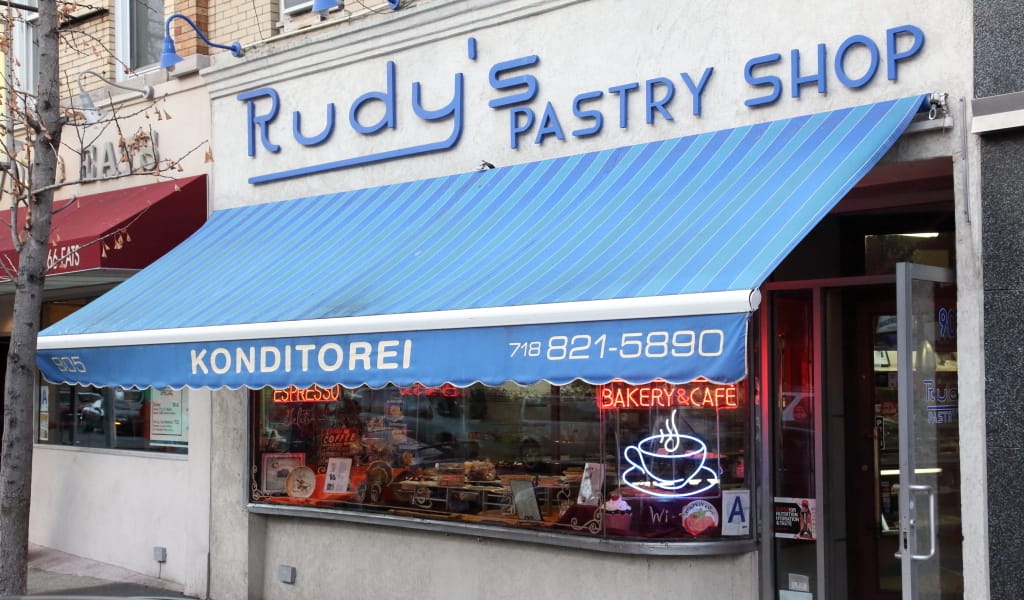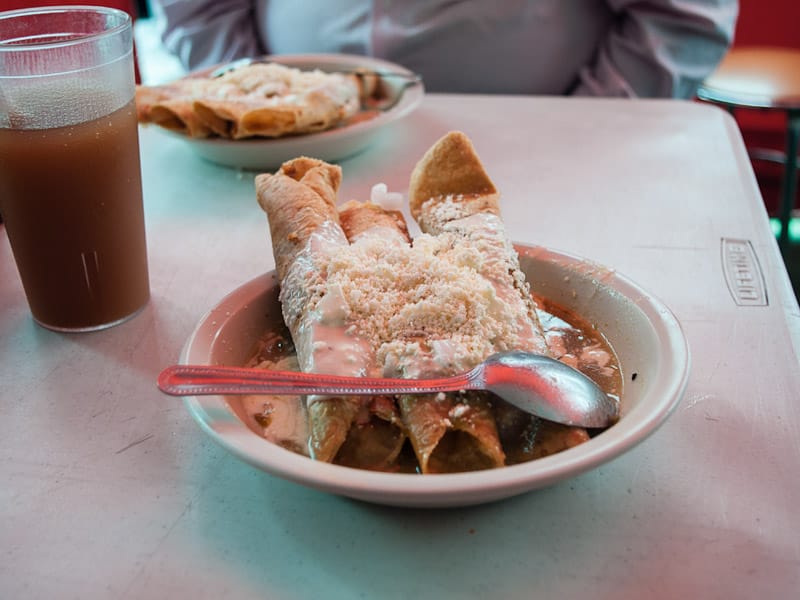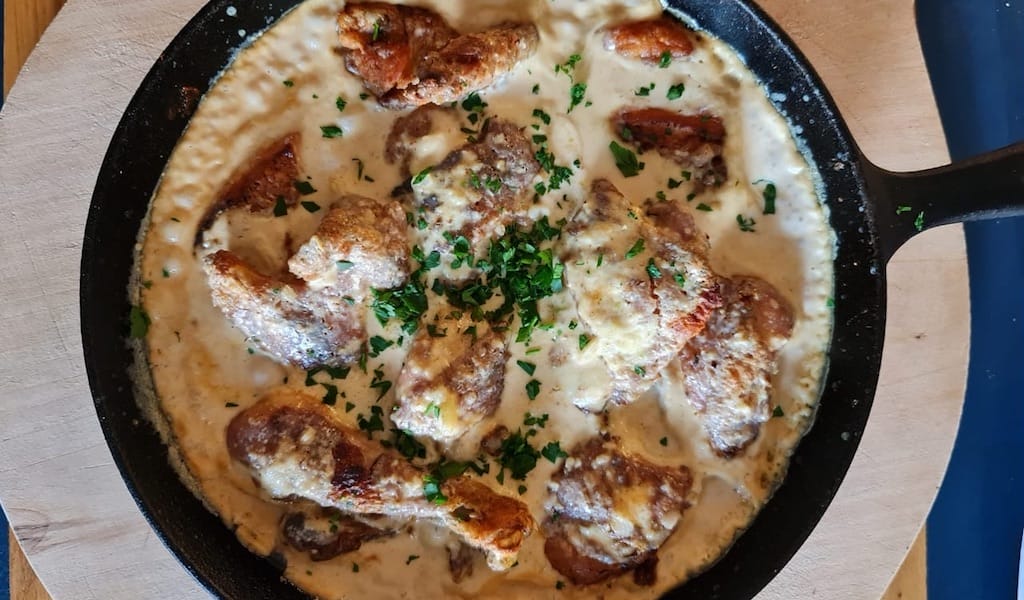If we could wind the clock back to 1934, to listen in as Rudy’s Bakery rolled its first strudel, German is the language we would have heard at the baker’s bench, and beside the glass-fronted display cases, and, more likely than not, on the sidewalk outside, along Seneca Ave.
At least since the late 1800s, Ridgewood, Queens, was a predominantly German community. Local breweries were major employers; at the turn of the century, Ridgewood and neighboring Bushwick, Brooklyn, were home to more than a dozen.
New York City tax photos taken between 1939 and 1941 reveal that Rudy’s immediate neighbor to the south was the Ebert & Weider Bar and Grill; today those premises are occupied by a Nepalese restaurant. To the north was the German-American-owned, cafeteria-style Bank Restaurant; nowadays it’s an eclectic diner called Ridgewood Eats. Between them, Rudy’s proudly called itself a konditorei (con-Dee-toh-Rye), which might be translated as “pastry shop,” “cake shop” or, simply, “bakery.”
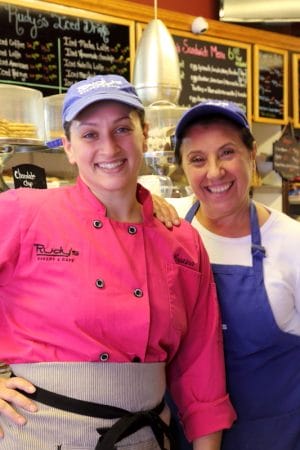 Rudy’s looks much the same, and the awning still wears the name konditorei, but today its German baking traditions are in Italian-American hands.
Rudy’s looks much the same, and the awning still wears the name konditorei, but today its German baking traditions are in Italian-American hands.
In 1973, Antonetta Binanti emigrated from Quaglietta, Italy – a village in the Avellino province, east of Naples and Salerno – to Astoria, Queens, to live with an older sister. At first, she spoke no English; in high school, where the kids came “from all over,” she picked it up in class, reinforced by after-school lessons. On the cheerleading squad, she also picked up a nickname: she preferred “Antonetta,” but “Toni” fit the rhythm of the cheerleader roll call.
Within a couple of years, Toni began working for her uncle Ralph Difonza at his Savory Bake Shop, also in Astoria. At first she was just “folding boxes, getting this and that,” but soon her uncle encouraged her to enter trade school for some formal training in culinary arts. By the time that Toni and Ralph recognized that she’d be joining him in the business, they also knew that Savory was “too small for the both of us.”
Ralph found a roomier bakery in Ridgewood. In 1980, he sold the Savory Bake Shop and bought Rudy’s from Kurt Schlegelmilch, who had succeeded his father, William. The elder Schlegelmilch, in turn, had bought the bakery sometime in the 1950s from a man whose first name was Rudolph – Rudy. (His last name, it seems, has been lost to memory.)
The neighborhood’s German population had been dwindling over the decades in favor of immigrants from Italy, Poland, Romania, Albania, and what was then an undivided Yugoslavia. Even so, “all of our workers were German,” Toni recalls. Working with the bench man one day, the oven man the next – to supplement Toni’s culinary education at trade school, Ralph insisted that she learn all aspects of the business firsthand – Toni picked up enough German to communicate with the bakers and with German-speaking customers, who often would greet her in their native tongue.
For the first 20 years, “we never changed anything,” Toni tells us. Apple strudel and Linzer tarts, Black Forest cake and bienenstich – the cream-filled “bee-sting cake” topped with caramelized almonds – continued to be prepared from scratch, just as always.
Cristina’s crew still follow the original recipes for Rudy’s traditional German confections.
In a constantly changing Ridgewood, new employees were less and less likely to be German. “This was my high school job,” says Cristina Nastasi, now 34 and the pastry chef at Rudy’s. Cristina, who was born blocks away in Wyckoff Hospital and grew up on nearby Menahan St., was hired as a counterwoman, but often she would disappear from the counter to work in back, with Ralph. A cheesecake, she remembers, was the first confection they baked together. Even as a high schooler, Cristina had passion enough for the profession that she worked some overnight shifts at Rudy’s; soon she entered the French Culinary Institute, where she graduated in 2003. We later became acquainted with Cristina’s handiwork, though not yet with Cristina herself, when she was the pastry chef of Café 2 and Terrace 5 at the Museum of Modern Art.
Toni became the sole owner of the bakery in 2003, when her uncle passed. “Ralph was the bakery,” she tells us. “I really thought of walking away.” Instead, Toni chose a makeover. In January 2012 – after the winter holidays but before the Super Bowl – she reconfigured Rudy’s by downsizing the back-room prep area and enlarging the public area, which till then had just one small table, adding a café.
It was around this time that Cristina came visiting; in short order she returned to Rudy’s, but not as a counterwoman. “My job is to be creative,” she tells us – that is, to augment old-school German confections with new menu items that appeal to a more diverse customer base. Today, roughly half of Ridgewood’s population speaks Spanish, so Cristina’s recipe for alfajores – Latin American sandwich cookies typically filled with dulce de leche – was an easy fit.
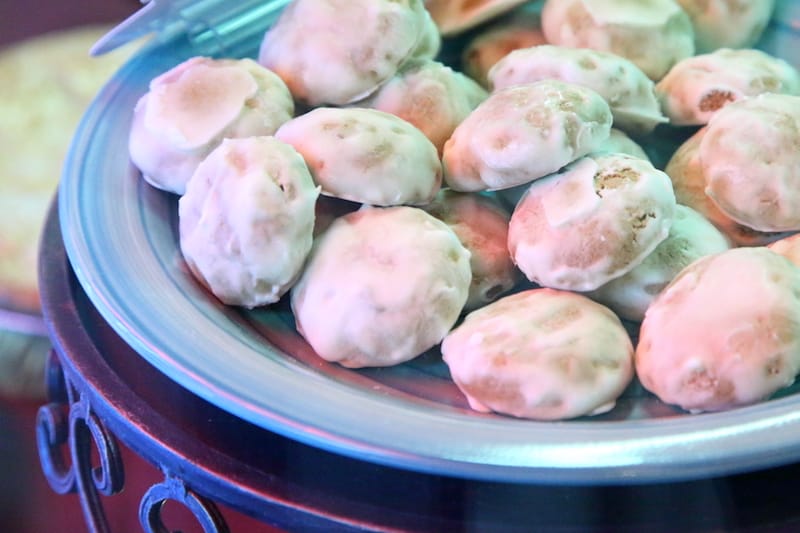
Cristina tells us that she tends to “go seasonal.” This past autumn, for example, she turned out a pumpkin spice layer cake with vanilla buttercream. We’ve admired it only from afar, but we made a point to get our hands on her most celebrated addition to Rudy’s bill of fare: an oatmeal marshmallow sandwich cookie. (We’re pretty sure it would travel well, but ours never made it out of the café.) As a matter of course, Rudy’s now serves biscotti and cannoli, guava sticks and the aforementioned alfajores, vegan and gluten-free items, all ready to be shared on Instagram through the in-house WiFi.
The bakers from the old country have long since retired, but Cristina’s crew still follow the original recipes for Rudy’s traditional German confections. Everything is still prepared from scratch – we can attest to the supple crust of the apple crumb cake.
Toni’s German is out of practice, but, come the winter holidays – when longtime customers come shopping for gifts – she still speaks spitzkuchen (gingerbread dipped in dark chocolate), stollen (sweet bread embedded with dried fruit), and particularly pfeffernüsse (with a silent “P”). A bagful of those sweetly glazed spice cookies, prepared from a generations-old recipe, is an aromatic remembrance of Christmas past.
 September 19, 2013 El Rey de las Ahogadas
September 19, 2013 El Rey de las Ahogadas
We’ve written previously about flautas, one of our favorite street foods. Those crisp, […] Posted in Mexico City March 25, 2021 Recipe
March 25, 2021 Recipe
When our friend applied for a chef gig at the cooking department of a northern […] Posted in Tbilisi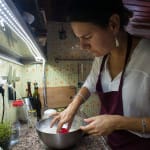 December 7, 2015 CB on the Road
December 7, 2015 CB on the Road
On the western coast of Turkey, the town of Alaçatı sways to the light of a thousand […] Posted in Istanbul
Published on December 04, 2018
Related stories
September 19, 2013
Mexico CityWe’ve written previously about flautas, one of our favorite street foods. Those crisp, finger-friendly “flutes” with their deeply savory, spiced chicken, pork, beef or potato filling are all about the gratifying crunch of the golden, deep-fried rolled tortilla (and the sour cream and grated cheese don’t hurt either). It’s hard to imagine how that winning…
March 25, 2021
TbilisiWhen our friend applied for a chef gig at the cooking department of a northern California community college, a board of evaluators gave him a pair of chicken breasts, a frugal selection of ingredients and said, “Create something.” He assessed his workspace and smiled. He saw white wine, chicken stock, butter, shallots and plenty of…
December 7, 2015
IstanbulOn the western coast of Turkey, the town of Alaçatı sways to the light of a thousand glowing cafés. What was once a typically beautiful and sleepy Turkish fishing village has transformed into a hub for glitzy nightlife. People swarm the seaside walkways to see and be seen, arriving in metallic SUVs and humming Italian…







































